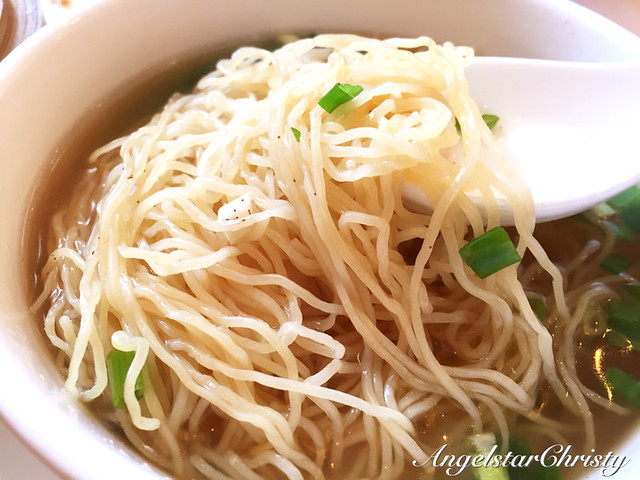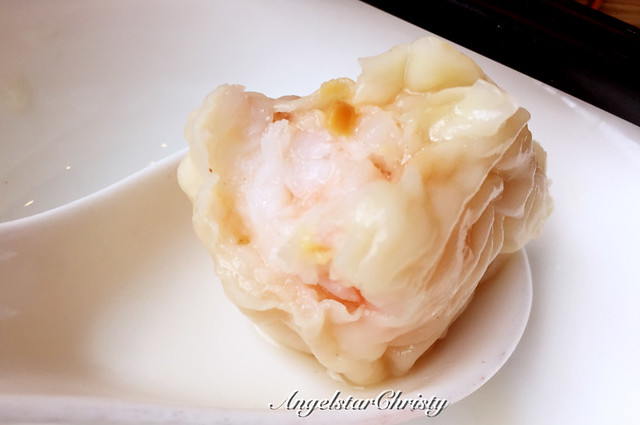
Does anyone just love dim sum as much as me?
I know you do, just admit it (well, maybe there are still some who are just not that into this delicate breakfast spread, but what are you thinking?)
There is just that sense of euphoria even at the very sight of these dainty darlings or even to hear the word 'Dim Sum'.
Dim sum has had a long history from its early beginnings and I've shared on the story in my previous posts (if you've been following me for a while, you know my passion)
While it probably started as a snack to fill one's hunger and slowly revolve to the royal dining tables and today, one of the most popular breakfast options around the world, there is little to doubt its influence.
Dim sum could be found in many Chinese restaurants, and while there are commonalities in the types of the dishes finding its way to the table; think culprits like Siew Mai, Har Gao, Char Siew Bao, etc, there is still that way to distinguish those who serve them.
It all comes down to the preparation and the culinary skills of the ones preparing them.
It is an art.
Dim sum is not about satisfying one's hunger or to fill one's appetite, and that is the truth.
The very reason it is known as Dim sum is because of its dainty portions which are meant to tease the appetites, rather than filling one's stomach to the core.
That is the very art of enjoying dim sum.
All the dim sum chefs know about this, and that is the very prelude to making what constitutes as good dim sum.
It is about creating that illusion of temptation and to reach to the fundamental senses; sight, smell, taste; with perhaps sound and even touch.
(I'll explain on that later)
The art of making dim sum is a delicate one, and it requires refined skills in doing so.
To entice one to glance at the dim sum and to fix their gaze on the dish requires experience and proper craftsmanship to craft an artistic piece which could be visually stimulating.
For instance, at a glance, Har Gao is just a bundle of prawns stuffed inside a crystal skin and served on a bamboo basket.
However, if the prawns were to fall out of the skin or the skin appear creased without that proper 'pinch', and to add to that, the few pieces of Har Gao were just sloppily placed on the plate, needless to say, it would be very unappetizing indeed.
One would definitely even form that impression that it is definitely poor in its taste, without even that desire to pick one up to try.
First impression always matters, and it is only in a split second when one decides on something.
But done properly, with fresh and juicy prawns molded in a well-rounded shape before enveloping it in crystal clear translucent skin, filling it to the brim to create that illusion of its proximity to the brink of bursting its skin, it could just make a totally different statement altogether.
Har Gao 蝦餃 (Steamed Prawn Dumplings in Crystal Skin)

Fresh ingredients, undoubtedly would make the perfect partner in crime to boosting the Har Gao's selling power.
(This chef even included crunchy bits of water chestnut to give it that extra boost in its bite - a direct touch on the taste factor)

Shrimp and Chives Dumpling with the evident intricate folding work done on the translucent skin to give it that neat exterior.

The entire contents are visible through the skin, which is another work of art to create that visual temptation.
Think of sheer material used on clothing; beautiful yet not totally revealing.
Xiao Long Bao (小籠包) (Steamed Shanghai Soup Dumplings) is an even more delicate art; as this is one where the chef has to be extremely careful and patient in wrapping not just the contents in solid form, but the key ingredient in this much sought after dumpling is the superior stock which just completes the luscious mouthful as one scoops it in the spoon and places it in the mouth.

It finishes with that light pop as one bites into the skin and the warmth of the soup oozes onto the soft surface of the tongue and tingles at the narrow gaps of the teeth, followed by the minced meat.

A good condiment is essential to complete the bite as well; as a good chef always notes vigilantly.
In this case, the Xiao Long Bao is always served along with the slices of ginger dipped with Zhenjiang vinegar.

This is simply one favorite in almost everyone's heart, and though not officially on every dim sum menu, this is still one of the most fine delicacies in the Chinese cuisine.
Steamed buns are the staple since the ancient times; a convenient and easy to make snack for most to take along on their road journeys.
While it may appear to be easy, a good bao, or mantou; which is simply steamed bun made of a lump of rice flour is not as simple as it is.
It involves patience to ensure the proper rising of the flour to create that bouncy and fluffy yet light airy texture as one bites into the exterior, to be greeted by the aromatic and well-marinated or blended mix which makes up the contents; depending on the type of bun filling involved.
Char Siew Bao, or the Steamed BBQ Pork Bun is one of the most ordered and favored bun in any dim sum meal.
Perhaps it is the savory taste which distinctly sets it apart from the rest of the paste-filling buns (also not an easy feat to perfect), making it one of the preferred choices of buns.

Some even go as far as to say that a dim sum is not complete without trying out the Char Siew Bao.
(For me, I'd pick the Har Gao)

The name suggests that the marinated filling is tantalizing in its taste and juicy in its punch, but most of all, at the tender pull of the bun to reveal the marinated meat, even the slightest aroma would suggest the amount of work done in the making of the filling.

The Char Siew Bao does not need to sport a smooth of desirable exterior, though it ought not to appear sloppy for it is the contents and that very whiff of the filling which will earn it its deserving points in perfecting the bite.
After all, if it were to be just a tiny wad of mashed up meat, one would be better off going for a plain steamed bun focused on all the refined taste in the making of the bun.
Rice flour is popular due to its versatility; and besides the steamed buns, it is also the main ingredient in the variety of the noodles out there.
Flat rice noodles wrapping prawns or meat and rolled over or served in a thin flat version lying on the plate, laced with marinated soy sauce may sound like a mundane dish easily found anywhere, but pack in the crunch from the fresh prawns and the styling of the accompanying sauce, and you will have a combination of visually enticing, appetite inducing and silky smooth touch of the flat noodles which just glide past the tip of the tongue without you even realizing.

That is the effect of the skillful art of a silky smooth flat rice noodles and the key in packing that punch to make a plate of good Cheong Fun.

To give a distinctive flavor to the conventional rice noodles, hand made and beaten egg noodles is just the answer.

Giving way to a new breed of noodles altogether, the egg noodles are also ranked in terms of their preparation and one of the most popular and convenient would be the Wanton Noodles.
It would probably not be in the list of dim sum, but the exquisite art of making a good bowl of the egg noodles along with the fine wantons (soup dumplings) promising satisfaction is not as easy as it sounds.
In fact, the Wanton Noodles has probably a long line of history and evolution in terms of its many ways of serving.

Fresh prawn wantons with well-battered and handmade egg noodles are my personal favorite, and the prawn wantons have to be packed as it is contained in the skin while crunchy in its sound as one bites into it.
 The soup has to deliver that flavor yet not dense to complement the slightly rich texture graced by the presence of the eggs in the noodle strips.
The soup has to deliver that flavor yet not dense to complement the slightly rich texture graced by the presence of the eggs in the noodle strips.It should, and must be a satisfying bowl to keep one's cravings at bay.

Slurping from the soup and crunchy sounds as one bites into the juicy prawn wanton, is a surefire way to tell one good bowl from another.
As told by the Wanton Noodles lovers.
Once all the criteria has been met, it all boils down to one important and ultimately the deciding factor; the quality of the taste.
It all doesn't matter, if by the end of the day, it just doesn't taste good, don't you think?


It is all about the art of perfection; the skills and experience required to make good dim sum.
One could just gobble down mouthfuls of Siew Mai or Har Gao, then gushes down the tea in the process, but enjoying dim sum is just as exquisite as the amount of effort that goes into the making.
It takes one to know one; and it is all also an art of refinery to take one to savor the entire package and appreciate the chef's artistic skills, in all its elegance.
After all, what is Dim Sum without that little bit of art?
It makes a lot of difference, trust me.
The chefs at Ocean Palace Restaurant in Ho Chi Minh City, sure know a thing or two about this.

Dim Sum Restaurant featured in this post:
Ocean Palace Restaurant, Ho Chi Minh City
You do not have to agree with me.
This is based on my personal experience and is told in a subjective manner, entirely from my perspective.
Photos/Videos all belong to me and are copyrighted.
Check out my Pinterest @Angelstarc
Follow me on my live updates on my life, happening on SNAPCHAT @angelstarchrist





3 comments
Lovely blog layout! and now u got me licking the screen! ohhh... i wanna dimsum for lunch..
ReplyDeleteLOL, Ciki, only you could make me LAUGH until it hurts and I just couldn't STOP!
ReplyDeleteYou're the best!
Awww...your blog layout is just as awesome and wayyyy more professional than mine! :-D
I generally check this kind of article and I found your article which is related to my interest. Genuinely it is good and instructive information, Private Chef Nyc Thankful to you for sharing an article like this.
ReplyDelete